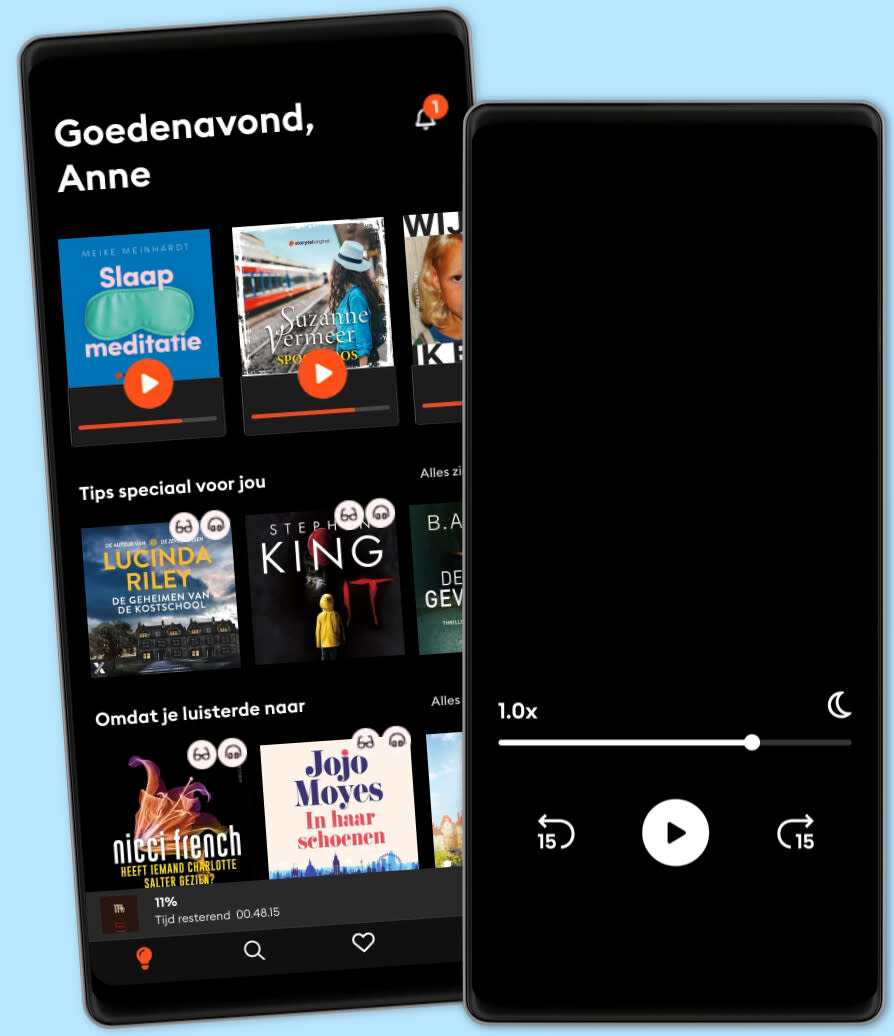Luisterboeken voor iedereen
Meer dan 1 miljoen luisterboeken en ebooks in één app. Ontdek Storytel nu.
- Switch makkelijk tussen luisteren en lezen
- Elke week honderden nieuwe verhalen
- Voor ieder een passend abonnement
- Opzeggen wanneer je maar wilt

The Freedom Riders: The History of the Civil Rights Activists Who Rode Buses around the South to Protest Segregation
- Door
- Met
- Uitgever
- 1 beoordelingen
1
- Lengte
- 1uur 48min
- Taal
- Engels
- Format
- Categorie
Geschiedenis
After a 1960 Supreme Court decision in Boynton v. Virginia, bus segregation was made illegal on new grounds: it violated the interstate commerce clause of the Constitution, by regulating the movement of people across state lines. With this victory in hand, the Freedom Rides of 1961 began. Organized primarily by a new group – the Congress on Racial Equality (CORE) – the Freedom Rides followed the same guidance that inspired the Montgomery Boycott and the Greensboro Sit-Ins – non-violent direct action. The purpose of the Freedom Rides was the test the Supreme Court's decision by riding from Virginia to Louisiana on integrated busses. This was notably the first major Civil Rights event that included a large segment of white participants.
Mobs in places like Birmingham and Montgomery firebombed buses and brutally beat the Freedom Riders, sending dozens to the hospital. Mob violence, orchestrated by the KKK and their segregationist allies, erupted endlessly throughout the summer. White activists, who were viewed by the Ku Klux Klan as betraying their race, took the worst beatings of all.
Both black and white Northerners had participated in the Freedom Rides, and civil rights activists sought other ways to harness their energy and activism in 1963. After the Freedom Rides, civil rights leaders initiated voter registration drives that could help register black voters and build community organizations that could help make their votes count. The momentum generated by the Freedom Rides and the following activism would lead to the famous March on Washington and eventually the passage of a historic civil rights bill in 1964.
© 2022 Charles River Editors (Luisterboek): 9798822637405
Publicatiedatum
Luisterboek: 3 juni 2022
Anderen genoten ook van...
- The Birmingham Campaign: The History of the SCLC’s Non-Violent Protests in Alabama’s Biggest City Charles River Editors
- Six Days of War: June 1967 and the Making of the Modern Middle East Michael B. Oren
- The History of Asian Immigrants in the United States during the 20th Century Charles River Editors
- Titan: The Life of John D. Rockefeller, Sr. Ron Chernow
- The CIA as Organized Crime: How Illegal Operations Corrupt America and the World Douglas Valentine
- A History of Fascism, 1914–1945 Stanley G. Payne
- 1917: Lenin, Wilson, and the Birth of the New World Disorder Arthur Herman
- 3500 Final Quotes Jane Austen
- Phantom Terror: The Threat of Revolution and the Repression of Liberty 1789-1848 Adam Zamoyski
- Vietnam: An Epic History of a Divisive War 1945-1975 Max Hastings
- Dodelijk spoor (1) Barbara De Smedt
4.3
- De leraar: Deze les zal ze nooit meer vergeten... Freida McFadden
4.3
- Bechamel Mucho Dimitri Verhulst
4
- Het Pumpkin Spice Café: Het seizoen om verliefd te worden Laurie Gilmore
3.6
- It ends with us: Nooit meer is de Nederlandse uitgave van It Ends With Us Colleen Hoover
4.4
- Slaapmeditatie: 30 minuten meditatie voor ontspanning en slaap Meike Meinhardt
4.2
- Operatie T.O.I.L.E.T. Timon Verbeeck
4.7
- Het moois dat we delen Ish Ait Hamou
4.5
- Omringd door idioten: Beter communiceren met collega's, vrienden en familie Thomas Erikson
4.1
- De hulp: Vanachter gesloten deuren ziet zij alles... Freida McFadden
4.4
- Dodelijk spoor (2) Barbara De Smedt
4.2
- It starts with us: Vanaf nu is de Nederlandse uitgave van het vervolg op It Ends With Us Colleen Hoover
4.3
- Over je toeren Manon Borgen
3.7
- Het eetcafé op de hoek Aline van Wijnen
4.3
- Hoe we onszelf graag kunnen zien: Over grenzen stellen, perfectionisme, people pleasing, zelfsabotage en ware veerkracht Onbespreekbaar
4.5
Maak je keuze:
Voor ieder een passend abonnement
Kies het aantal uur en accounts dat bij jou past
Download verhalen voor offline toegang
Kids Mode - een veilige omgeving voor kinderen
Unlimited
Voor wie onbeperkt wil luisteren en lezen.
1 account
Onbeperkte toegang
Meer dan 1 miljoen luisterboeken en ebooks
Altijd opzegbaar
Premium
Voor wie zo nu en dan wil luisteren en lezen.
1 account
30 uur/maand
Meer dan 1 miljoen luisterboeken en ebooks
Altijd opzegbaar
Flex
Voor wie Storytel wil proberen.
1 account
10 uur/30 dagen
Spaar ongebruikte uren op tot 50 uur
Meer dan 1 miljoen luisterboeken en ebooks
Altijd opzegbaar
Family
Voor wie verhalen met familie en vrienden wil delen.
2-3 accounts
Onbeperkte toegang
Meer dan 1 miljoen luisterboeken en ebooks
Altijd opzegbaar
2 accounts
€18.99 /30 dagenNederlands
België